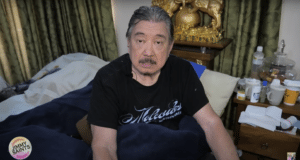The COVID-19 crisis has fueled the surge of not only fake face masks and other medical products related to the pandemic, but also counterfeit medicines, especially those over-the-counter (OTC) or sold without prescription. As COVID-19 cases continue to increase globally, so are the counterfeiters who are exploiting the growing gaps in the market.
Recently, the Philippine Food and Drug Administration (FDA) released an advisory against the purchase and use of counterfeit drugs.
A counterfeit drug is a fake drug. Counterfeit drugs are those with the wrong or contaminated ingredients, with the correct ingredients but wrong amounts, or without the active ingredients. They can also be mislabeled and can apply to both generic and branded products. In addition, they are not registered with the FDA and did not go through validation and standard tests to confirm their quality, safety, and efficacy. Selling or offering for sale of such is a violation of Republic Act No. 8203 and the FDA Act of 2009. It is also against intellectual property.
Among the recently reported counterfeit drugs is paracetamol. In the country, it is famously seen in huge advertisements and is commonly used for pain or fever. Although some health authorities argue on the use of paracetamol in this pandemic, many experts around the world recommend the use of fever-lowering over-the-counter medicines to cope with COVID-19 symptoms.
There are many ways to identify an authentic drug from fake. The physical signs serve as the quickest markers. These include the color, size, weight, and design of both the drug and its packaging. It is also essential to examine the appearance of the foil and other parts of the packaging such as logo, lot/batch number, expiration date, and security features such as a hologram. It is preferable that the product in question be compared side by side with the authentic medicine rather than relying on memory. Also, check for any misspelling or questionable directions, especially in the leaflet, and if the manufacturer’s address is traceable. Additionally, counterfeit drugs have a strange smell or taste, and they crack easily. When the counterfeit drug is already taken, a feeling that something is wrong may occur, such as an unexpected reaction.
It is advisable to buy medications from establishments with a license to operate from the FDA. Think twice if the price is lower than usual, especially those found online or in the black market. Being able to identify authentic drugs from fake ones is the first step in the war against fake drugs, and to avoid a parallel pandemic of counterfeit drugs.
Teresa May Bandiola,
bandiolateresamayb@gmail.com



